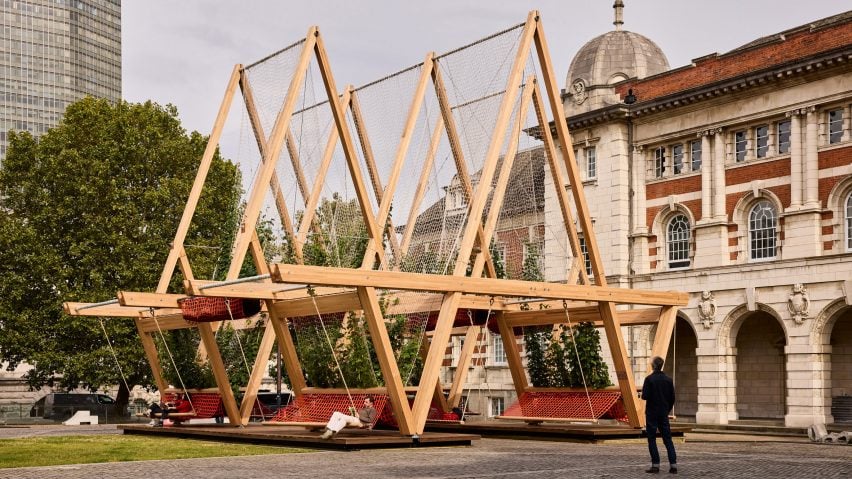
Vert pavilion at London Design Festival serves as "garden for insects and people"
Design studio Diez Office and urban greening specialists OMCC have collaborated with the American Hardwood Export Council to create a "greening machine" exhibited during London Design Festival.
Displayed within the courtyard at Chelsea College of Arts, the Vert pavilion features a timber structure traversed by greenery and was designed to address rising temperatures and dwindling biodiversity within cities.
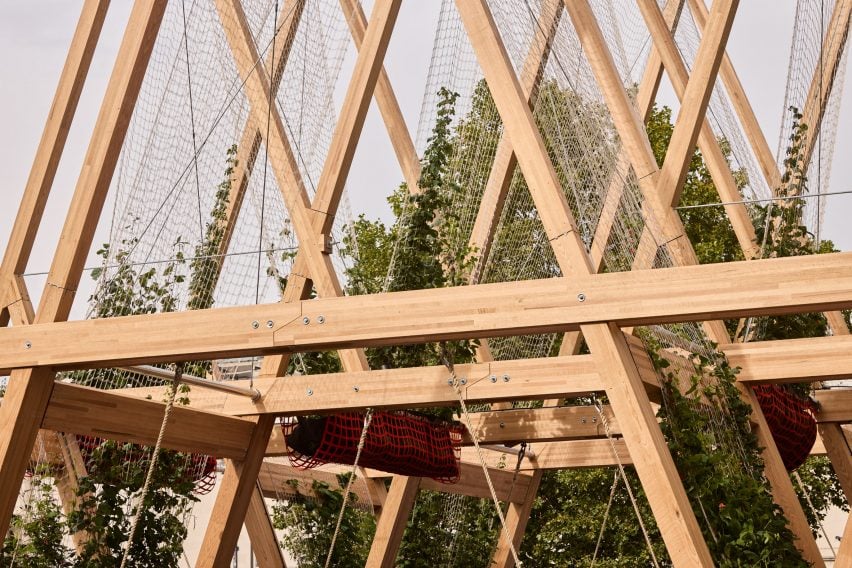
"The project is intended to inspire urban planners, architects and designers to tackle climate change and, above all, to develop interdisciplinary solutions together," co-founder of OMCC Nicola Stattman told Dezeen.
"We want to show that large-scale greening systems can also be realised in densely built-up city centres," she added. "A garden for insects and people in the centre of the city, a place to relax."
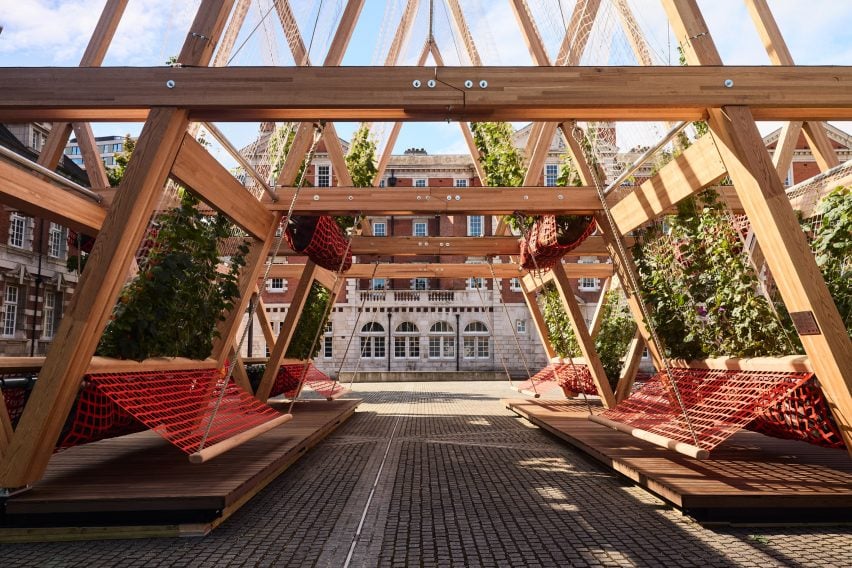
Vert is composed of a series of timber triangles constructed from a modular, red oak glued laminated timber structure.
With guidance from American Hardwood Export Council (AHEC), Diez Office and OMCC chose red oak for the pavilion due to its "structural performance and ecological credentials".
"We have been enthusiastic about the aesthetic possibilities and environmental benefits of red oak since learning about the species, and continue to experiment with it, such as by making furniture," founder of Diez Office Stefan Diez told Dezeen.
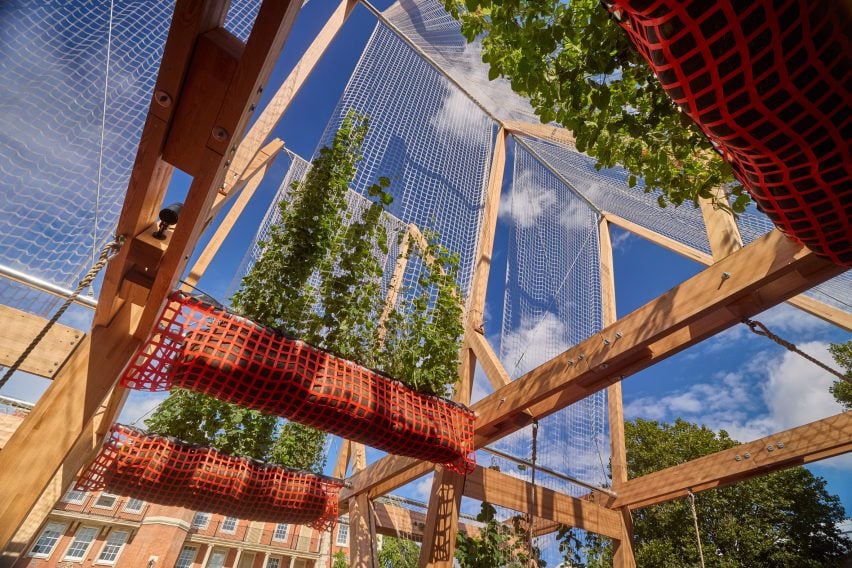
Reaching 10 metres high, the timber structure is interspersed with biodegradable fabric nets that are greened by more than 20 species of climbing plants serving as a home for insects.
A street runs through the base of the structure to provide circulation, and is flanked by two platforms that host sheltered net seating for visitors.
According to the studios, the structure is able to cool its surrounding airspace by up to eight degrees, and can cast four times more shade and store approximately 25 times more CO2 than a 20-year-old tree.
"The structure performs as a 'greening machine', while also making urban spaces more harmonious and pleasant to live in from an aesthetic point of view," Diez said.
"The project is shaped by a desire to use materials in a responsible way, and to push the engineering performance while not compromising the aesthetic appeal," he added. "We wanted Vert to break the monotony of our urban environment."
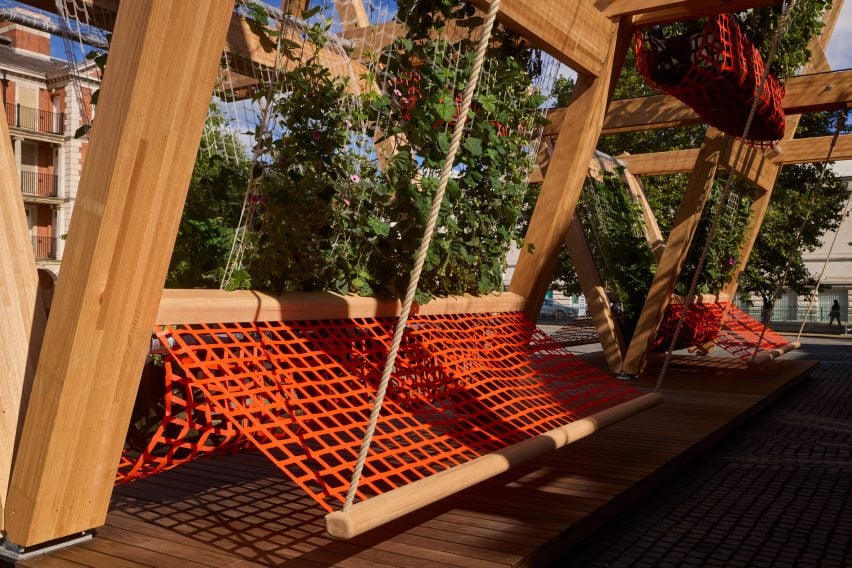
The pavilion's modular structure was designed to be dismantled and rebuilt several times and, following its four-week-stint at Chelsea College of Arts, will be dismantled and stored before being set up in a different location next summer.
The photography is by Petr Krejci.
Vert will be presented as part of London Design Festival at Chelsea College of Arts from 14 to 22 September 2024. See Dezeen Events Guide for an up-to-date list of architecture and design events taking place around the world.